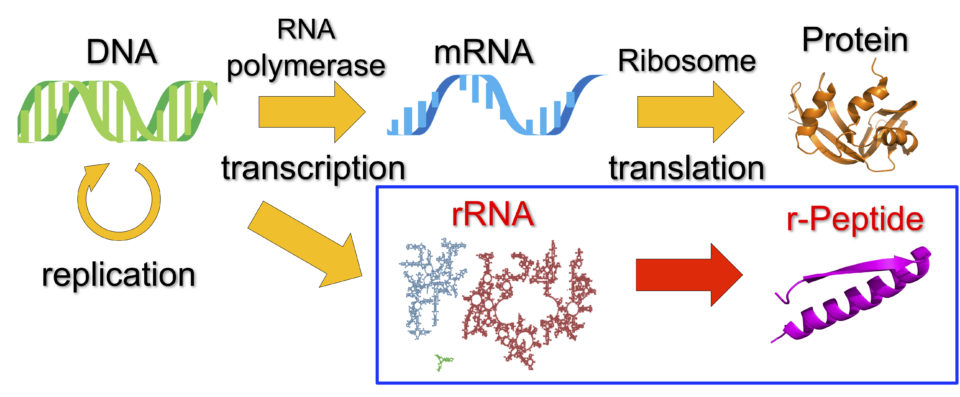Research Pursuit of the principle of life: Understanding the Central dogma of molecular biology and the interaction between mirror image biomolecules
The Central Dogma of Molecular Biology was proposed by Click in 1958. According to this dogma, genetic information is preserved by DNA replication, DNA information is transcribed into mRNA, and mRNA information is translated into a polypeptide (protein). This pathway is treated as the basis of the principle of life. Understanding how the first life was formed and evolved is one of the most important goals of Life science. In our laboratory, we are conducting research study to elucidate the synthetic pathway and its function of polypeptides in bacteria, which deviates from the principle of central dogma (Fig. 1).

As a result of unresolved molecular evolution, life is constructed from proteins composed of L-type amino acids (L-type proteins) and DNA containing D-type deoxyribose (D-type DNA). Homochirality has been established for proteins and DNA, which play a central role in biological phenomena, and the selectivity of chirality is tightly controlled. It is of great interest to clarify the cross-reactivity of cognitive abilities between enantiomer molecules. (Fig. 2). In our laboratory, we put focus on the oligomeric domain of proteins as a target to study the structure and function between enantiomeric biomolecules. Analysis of the complex between the natural L-type domain and the enantiomeric D-type domain revealed that there are unique interactions that cannot be observed by interaction with a single-enantiomeric biomolecules.

We hope that our study can be a steppingstone to understand chiral recognition and cause of homochirality.
